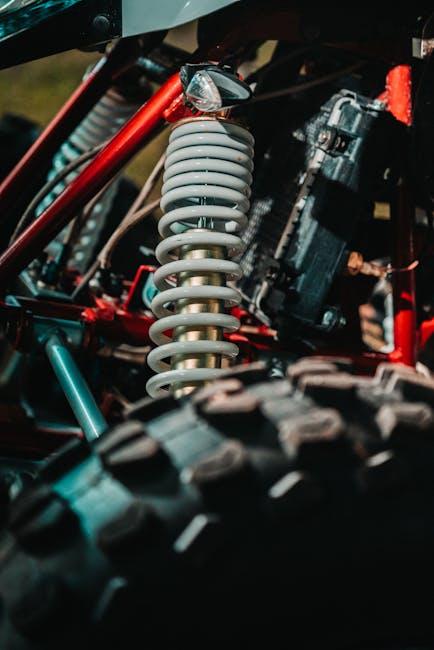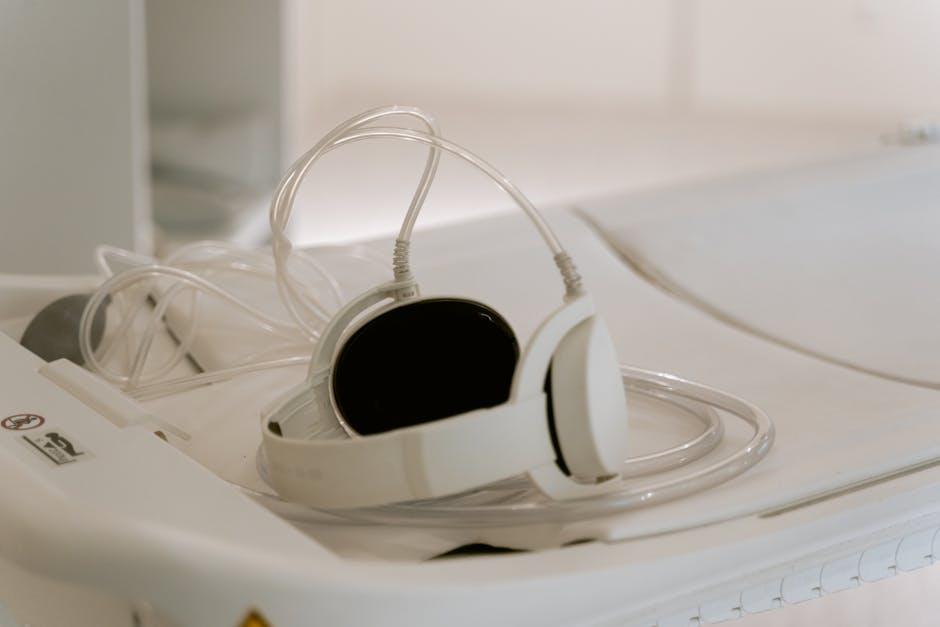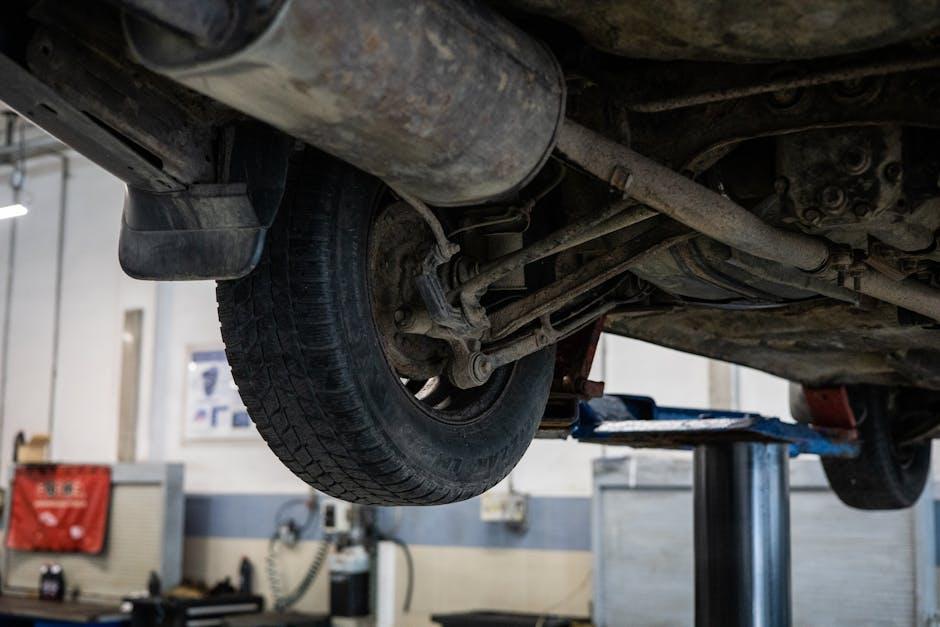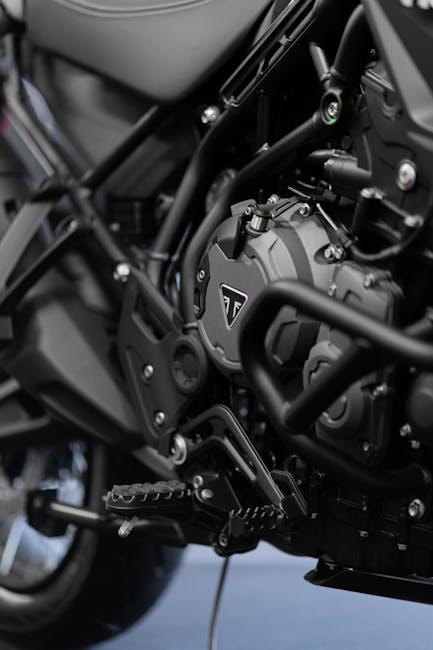Beneath the smooth glide of every journey lies a complex web of components working in harmony—your vehicle’s suspension system. It’s the unsung hero that cushions you from bumps, stabilizes your ride, and keeps tires firmly in contact with the road. Yet, like any hardworking mechanism, suspension parts endure wear and tear over time. Recognizing the subtle signs of worn-out suspension components isn’t just about preserving comfort; it’s essential for safety and vehicle longevity. In this article, we explore the key indicators that signal your suspension system may be calling for a checkup before minor issues turn into major repairs.
Table of Contents
- Common Symptoms Revealing Suspension Wear
- How Uneven Tire Wear Signals Suspension Issues
- Detecting Suspension Problems Through Vehicle Handling
- The Role of Noises in Diagnosing Suspension Failures
- Assessing the Impact of Worn Shocks and Struts
- Maintenance Tips for Prolonging Suspension Life
- Q&A
- Wrapping Up

Common Symptoms Revealing Suspension Wear
Noticing unusual changes in your vehicle’s behavior can be an early indicator that the suspension system is struggling. Excessive bouncing after hitting a bump, a feeling of instability around corners, or a persistent rattling sound when driving over uneven surfaces often point to components that have seen better days. These symptoms suggest that shocks and struts may no longer be absorbing road impacts properly, leading to diminished ride comfort and compromised control.
Other telltale signs are revealed through physical inspection and routine maintenance checks. Look out for uneven tire wear patterns, which signal misaligned or damaged suspension parts. Pay attention to the steering wheel, too: if it feels unusually loose or pulls to one side, your suspension could be the culprit. Below is a quick reference list of symptoms frequently linked to worn suspension elements:
- Car nose-diving during braking
- Uneven or rapid tire wear
- Steering wheel vibration or looseness
- Excessive body roll in turns
- Clunking or knocking noises over bumps

How Uneven Tire Wear Signals Suspension Issues
Uneven tire wear is more than just a cosmetic issue; it’s a clear indicator that your vehicle’s suspension system may be struggling. When suspension components such as bushings, ball joints, or struts start to degrade, they fail to maintain proper wheel alignment and balance. This misalignment causes certain parts of your tires to experience excessive friction, leading to worn patches. You might observe feathered edges, cupping, or bald spots on your tires, which directly reflect underlying suspension problems that need immediate attention.
Addressing this uneven wear promptly can prevent further damage and save you money in the long run. Consider these common symptoms tied to suspension issues:
- Vibrations while driving due to unstable wheel movement
- Pulling to one side which indicates misalignment
- Clunking noises over bumps, signaling loose or worn components
| Suspension Part | Possible Tire Wear Pattern | Implication |
|---|---|---|
| Shock Absorbers | Cupping | Poor damping causing uneven pressure |
| Ball Joints | Feathering | Excessive play affecting alignment |
| Control Arm Bushings | Inner/Outer Edge Wear | Misalignment due to looseness |

Detecting Suspension Problems Through Vehicle Handling
When your vehicle’s suspension is compromised, it’s often reflected most clearly in how the car handles on different surfaces. You might notice excessive bouncing after hitting a bump or an unsettling feeling when cornering. These signs suggest that the shocks or struts no longer absorb road imperfections effectively. Additionally, a pulling sensation to one side during braking or uneven tire wear can be subtle hints that a deeper suspension issue is affecting stability and safety.
Another key indicator is the presence of unusual noises such as clunks or squeaks emanating from the suspension system when driving over rough terrain or making turns. Pay close attention to how the steering responds; if it feels loose, unresponsive, or exhibits a delayed return to center, the suspension components may be worn out. Below is a quick reference table of common handling symptoms linked to specific suspension problems:
| Handling Symptom | Possible Suspension Issue | Common Cause |
|---|---|---|
| Excessive bouncing | Worn shock absorbers | Damaged internal seals |
| Pulling during braking | Misaligned suspension | Broken control arm bushings |
| Loose steering feel | Worn ball joints or tie rods | Natural wear over time |
| Uneven tire wear | Suspension misalignment | Damaged springs or mounts |

The Role of Noises in Diagnosing Suspension Failures
Listening closely to the sounds your vehicle makes when driving over bumps or turning corners can reveal a lot about the health of your suspension. Clunking, squeaking, or rattling noises often indicate that components such as bushings, ball joints, or struts are worn or damaged. These noises result from increased play or metal-on-metal contact, pointing to parts that may no longer absorb shocks effectively or maintain proper alignment. Paying attention to when and where these sounds occur—whether during acceleration, braking, or cornering—helps pinpoint the specific suspension elements that need inspection or replacement.
Below is a quick reference table summarizing common noise symptoms and their typical suspension causes, making it easier to correlate sounds with potential issues:
| Noise Type | Possible Source | What It Suggests |
|---|---|---|
| Clunking | Worn Ball Joints | Loose or damaged joints reducing stability |
| Squeaking | Dry Bushings | Insufficient lubrication causing friction |
| Rattling | Damaged Struts or Shocks | Failing dampers losing shock absorption |
| Thumping | Broken Springs | Compromised suspension support |

Assessing the Impact of Worn Shocks and Struts
When shocks and struts are past their prime, the overall driving experience begins to deteriorate noticeably. You might start feeling excessive bouncing after hitting a bump or notice that your vehicle sways unnervingly during turns. This instability not only makes for an uncomfortable ride but also compromises your control, especially on uneven or slippery roads. In addition, worn suspension components often amplify vibrations, leading to erratic tire wear and potentially costly repairs down the line.
Several telltale signs point to suspension issues that shouldn’t be ignored:
- Longer stopping distances: A weakening suspension can increase braking time, affecting safety.
- Uneven tire tread: Indicates poor shock absorption and suspension alignment problems.
- Rattling or knocking sounds: Noises coming from the undercarriage could signal damaged struts or mounts.
- Visible fluid leaks: Leaking shocks lose their ability to dampen motion effectively.
| Symptom | Potential Cause | Effect on Driving |
|---|---|---|
| Excessive Bouncing | Worn shocks | Decreased stability |
| Vehicle Nose Dives | Strut failure | Extended stopping distance |
| Swaying or Rolling | Loose suspension | Reduced cornering control |

Maintenance Tips for Prolonging Suspension Life
To extend the life of your suspension, regular inspections are essential. Keep an eye out for unusual noises such as clunks or squeaks when driving over bumps, as these can indicate worn bushings or mounts. Additionally, maintaining the correct tire pressure prevents uneven strain on suspension parts, reducing premature wear. Visual checks of shock absorbers for leaks and damaged boots should become a routine task, especially after heavy driving or rough terrain exposure.
- Wash suspension components to remove dirt and road salt, which accelerate corrosion.
- Lubricate joints periodically if your vehicle design allows it, ensuring smooth operation.
- Align wheels regularly to avoid uneven wear on shocks, springs, and tires.
| Maintenance Task | Recommended Frequency | Benefit |
|---|---|---|
| Visual inspection of shocks | Every 6 months | Early detection of leaks or damage |
| Tire pressure check | Monthly | Reduces uneven suspension wear |
| Suspension lubrication | Every 12,000 miles | Smoother movement & less noise |
Q&A
Q&A: Unveiling the Signs of Worn-Out Suspension Components
Q1: Why is the suspension system important in a vehicle?
A1: The suspension system acts like the vehicle’s backbone for smooth rides and safe handling. It cushions the impact from bumps and keeps the tires firmly in contact with the road, ensuring comfort and stability.
Q2: What are some common signs that suspension components are worn out?
A2: Look out for uneven tire wear, excessive bouncing after hitting a bump, a noticeable nose dive when braking, swaying or leaning during turns, and a generally rough or rattling ride. These are telltale signals your suspension might be begging for attention.
Q3: Can I detect suspension issues just by inspecting my car visually?
A3: Visual checks can sometimes reveal problems like leaking shock absorbers or sagging springs. However, many suspension issues are subtle and require a driving test or professional inspection to fully diagnose.
Q4: How does uneven tire wear relate to suspension problems?
A4: Worn or damaged suspension parts fail to keep tires properly aligned and in contact with the road, causing uneven pressure and wear patterns. If your tires seem worn out in strange spots, suspension trouble could be the culprit.
Q5: What happens if I ignore signs of suspension wear?
A5: Neglecting worn suspension components can lead to poor vehicle control, longer stopping distances, increased tire wear, and ultimately a risky driving experience. It can also cause further damage to other parts of your vehicle.
Q6: Should I attempt suspension repairs myself if I notice these signs?
A6: Suspension repair can be complex and requires specific tools and expertise. While basic checks are fine, it’s best to consult a qualified mechanic to ensure safe and effective repairs.
Q7: How often should suspension components be checked?
A7: It’s wise to have your suspension inspected during routine maintenance visits or at least once a year. Also, get it checked promptly if you notice any unusual handling or ride issues.
Q8: Are suspension issues costly to fix?
A8: Costs vary depending on the severity and which parts need replacing. Timely repairs can prevent more expensive damage down the line. Think of it as an investment in your vehicle’s safety and longevity.
Q9: Can new suspension components improve my vehicle’s performance?
A9: Absolutely. Upgrading or repairing suspension parts can restore smoothness, enhance handling, and provide a safer, more enjoyable driving experience.
Q10: What’s the bottom line in recognizing worn suspension components?
A10: Trust your senses: Listen, feel, and observe. If your vehicle isn’t riding or handling like it used to, suspension issues might be the reason. Early detection keeps your journey safe and comfortable.
Wrapping Up
Recognizing the signs of worn-out suspension components is more than just a maintenance task—it’s a key step toward ensuring your ride remains smooth, safe, and reliable. By tuning into the subtle cues your vehicle sends, you can catch issues before they escalate into costly repairs or dangerous breakdowns. Whether it’s unusual noises, uneven tire wear, or a bouncy driving experience, paying attention to these signals keeps you firmly in control of the road ahead. After all, a healthy suspension isn’t just about comfort—it’s the foundation of every journey you take.

